Art has always been a medium of expression, but for some, it becomes a mirror reflecting the most intricate and vulnerable aspects of their minds. This is undoubtedly true for Bryan Charnley, a British artist whose life was both tragically short and deeply impactful. His self-portrait series is not just art; it is a raw, unfiltered exploration of his battle with schizophrenia. This collection, known as the Bryan Charnley self portrait series, captures the unique intersection of creativity and mental illness in ways that resonate universally.
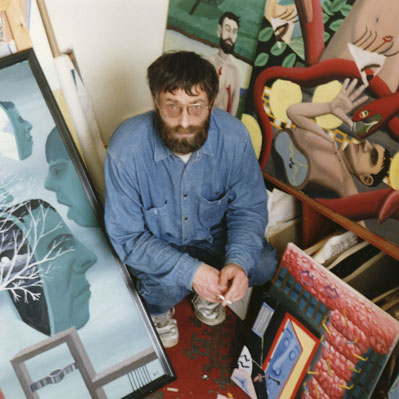
Through this article, we’ll dive deep into the Bryan Charnley self portrait series, his life, his other artworks, and the tragic circumstances that led to his untimely death. This isn’t just a story about an artist; it’s a story about a man’s quest to find meaning and understanding in a world that often felt fractured and alien.
Who Was Bryan Charnley? A Life Shaped by Schizophrenia
Born in London in 1949, Bryan Charnley displayed artistic talent from a young age. He pursued formal art education at the Central School of Art and Design, where his creativity flourished. However, during his early twenties, Charnley’s life took a turn when he was diagnosed with schizophrenia.
For Charnley, schizophrenia wasn’t merely a medical condition—it became the defining lens through which he experienced the world. His perception of reality, fragmented and often overwhelming, profoundly influenced his artwork. As a schizophrenic artist, Charnley didn’t shy away from confronting the stigma and complexities of his condition. Instead, he embraced it, channeling his struggles into a body of work that continues to captivate audiences.
The Self-Portrait Series: A Masterpiece of Vulnerability
The Bryan Charnley self portrait series, completed in 1991, is his most celebrated and haunting project. Consisting of 17 self-portraits, each painting serves as a visual diary, capturing his mental state during its creation. What makes this series so unique is not just the art itself but the deliberate choices Charnley made to intensify its authenticity.
The Genesis of the Self Portrait Series
After years of living under the heavy blanket of medication, Charnley made a fateful decision in 1991. With the encouragement of Marjorie Wallace, who intended to write about his work, he began documenting his experience through a series of self-portraits while systematically reducing his medication – Depixol and Tryptisol. Each portrait, measuring 20 x 20 inches, would be accompanied by his own written testimony, creating an unprecedented record of a mind in crisis.
The Portraits: A Descent into the Depths
Portrait 1: April 11-16, 1991 – The Last Glimpse of Stability
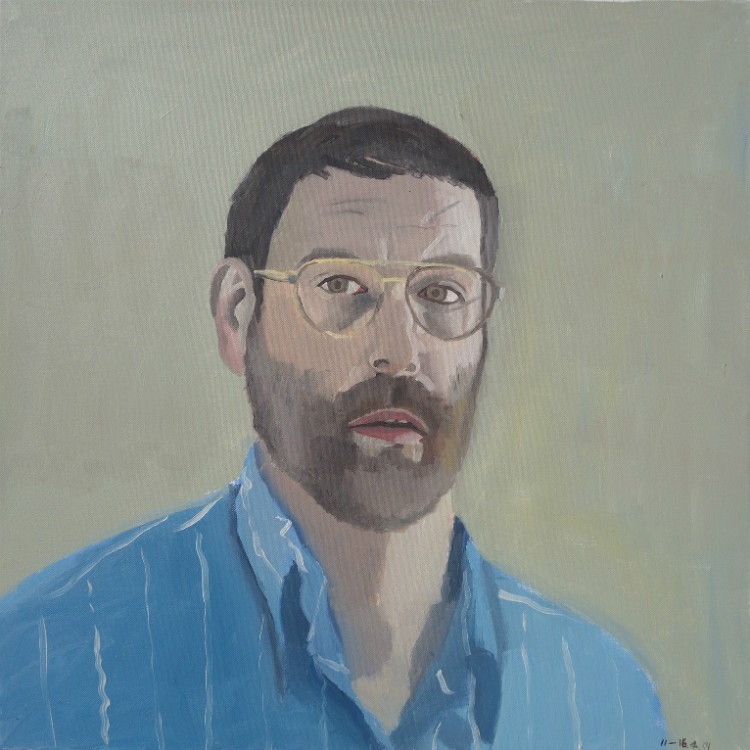
The series begins with what Charnley describes as a “conventional portrait painted in two sittings.” On his full dosage of two 3mg tablets of Depixol daily plus two 25mg Tryptisol, this first portrait shows the artist as others might have seen him. “Is it a good likeness?” he wondered, already contemplating the changes to come.
Portrait 2: April 20, 1991 – The First Cracks
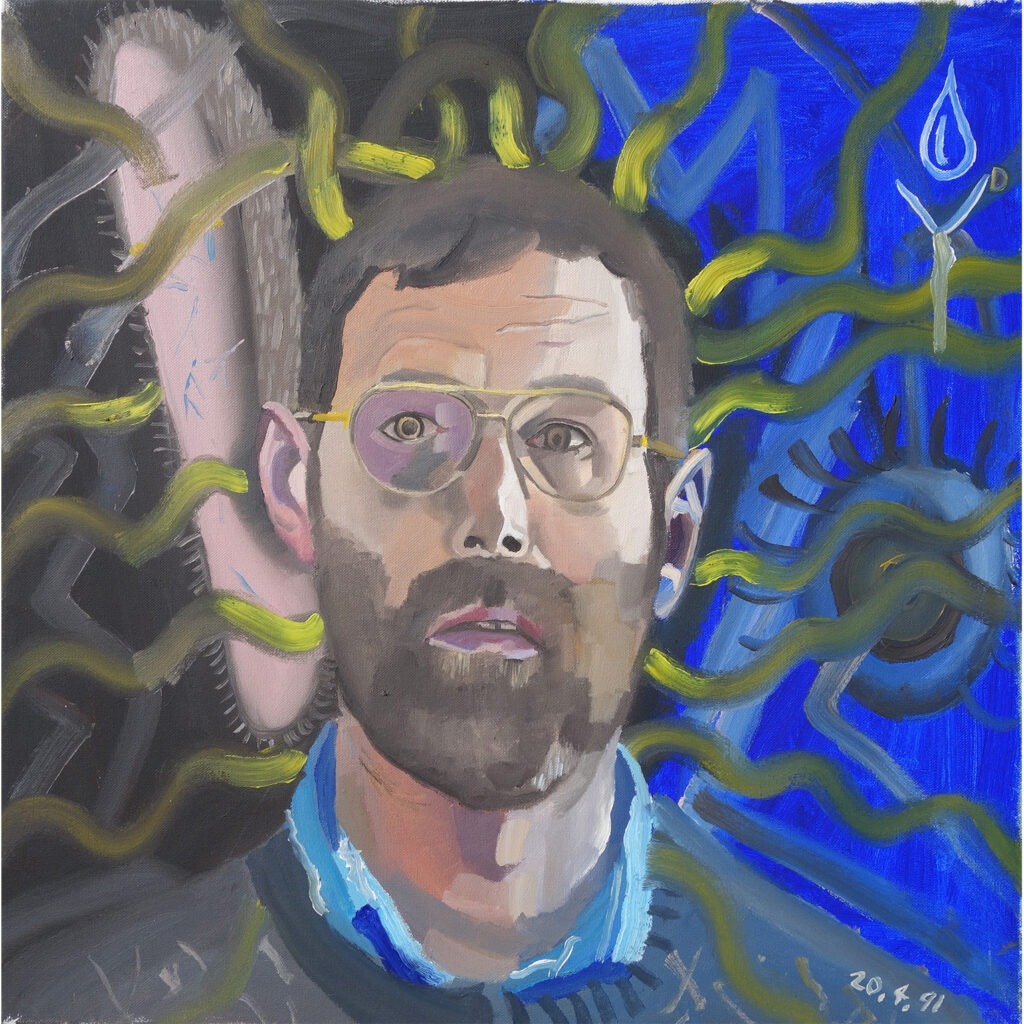
After reducing his Depixol to one tablet, Charnley’s reality began to shift. “Very paranoid,” he wrote. “The person upstairs was reading my mind and speaking back to me to keep me in a sort of ego crucifixion.” The portrait features a large rabbit ear, symbolizing his heightened sensitivity to human voices, “like a wild animal.”
Portrait 3: April 23, 1991 – The Breaking of Concentration
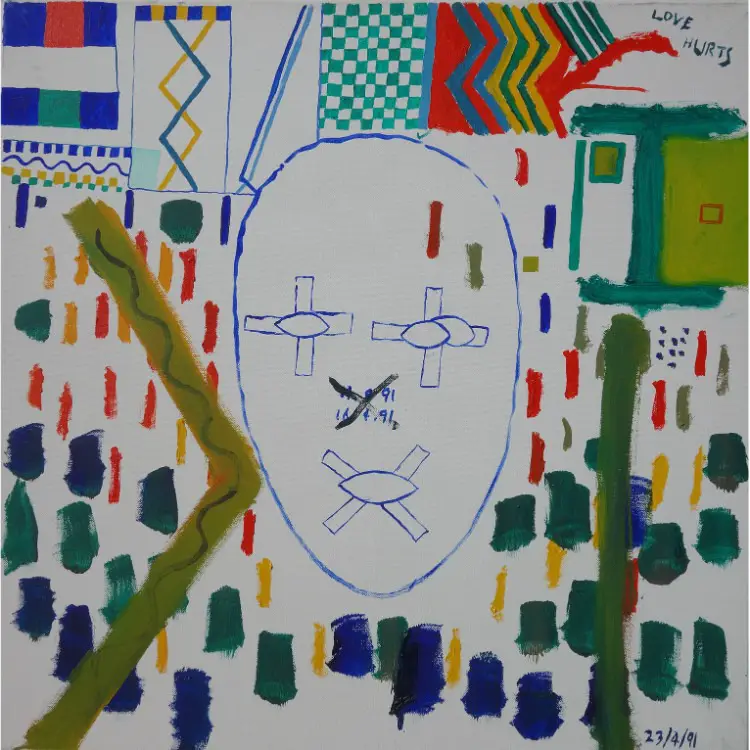
Inspired by Louis Wain’s famous series showing the progression of psychosis, Charnley found himself unable to maintain the technical precision of his earlier work. “The painting takes on the crudeness of bad graffiti,” he noted, attributing this to his reduced medication. The portrait shows crossed-out eyes and mouth, representing his feeling of being both blind and mute in a world where others seemed to possess extraordinary sensory abilities.
Portrait 4: April 24, 1991 – Blood and Pain
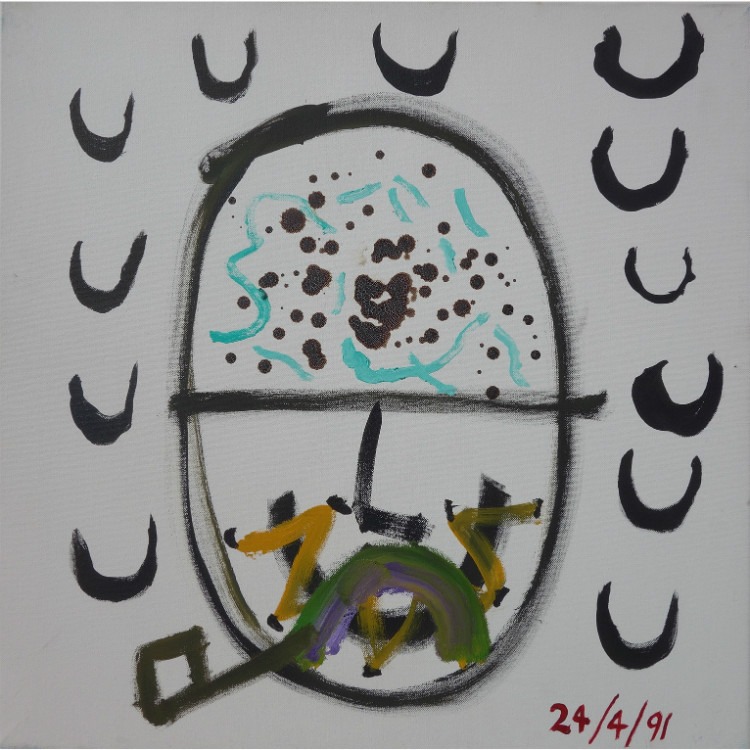
In one of the most disturbing entries, Charnley used his own blood in the painting. “Why miss a golden opportunity to describe through paint total mental disintegration,” he wrote. The portrait features horns functioning as mouths, representing ESP, and a stitched-up mouth reflecting his inability to communicate.
Portrait 5: April 29, 1991 – The Battle with Spiritual Forces

A breakthrough came when his twin brother’s words cut through his delusions about smoking. “Love is Strange” appears in this work, referencing both a popular song and a deeper truth about the power of rational insight over medication. “The doctors just prescribe more and more drugs when the patients comes up with something he can’t handle,” Charnley observed.
Portrait 6: May 2, 1991 – The Torpid State
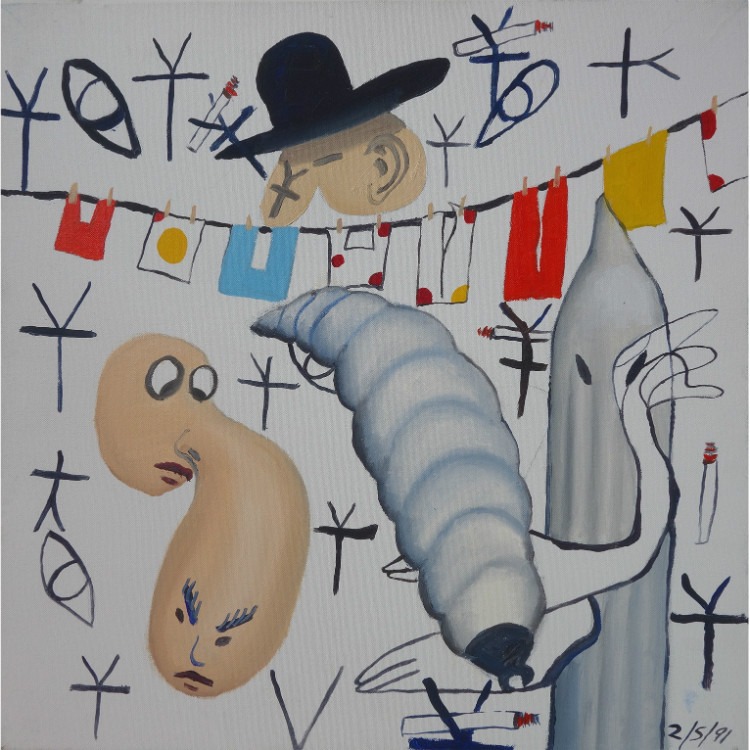
Returning to his original dosage, Charnley found himself almost completely without energy. He depicted himself as a pupa, with a crushed spirit represented by a bird. The clothes line in the painting suggests his private thoughts on public display.
Portrait 7: May 6, 1991 – The Target

Feeling persecuted and misunderstood, Charnley portrayed himself as a target for cruel remarks. A nail through his mouth represents his inability to communicate effectively, a theme that would recur throughout the series.
Portrait 8: May 14, 1991 – The Splitting Ego
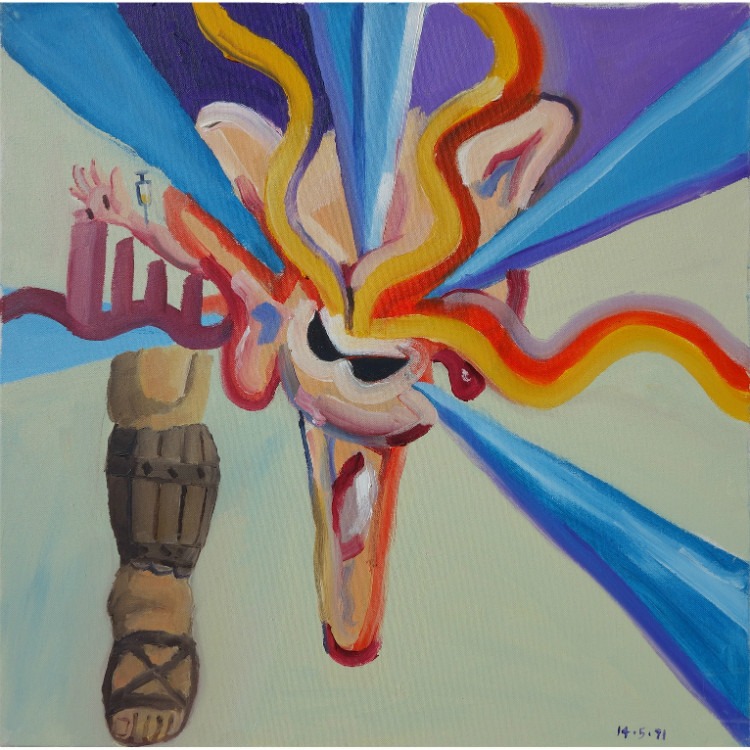
This complex work shows the ego “splitting like a cancer cell,” with references to both personal and historical trauma. A Roman soldier’s leg represents his fear of retribution for past actions, particularly regarding his role in a young woman’s suicide attempt.
Portrait 9: May 18, 1991 – The Broadcasting Mind
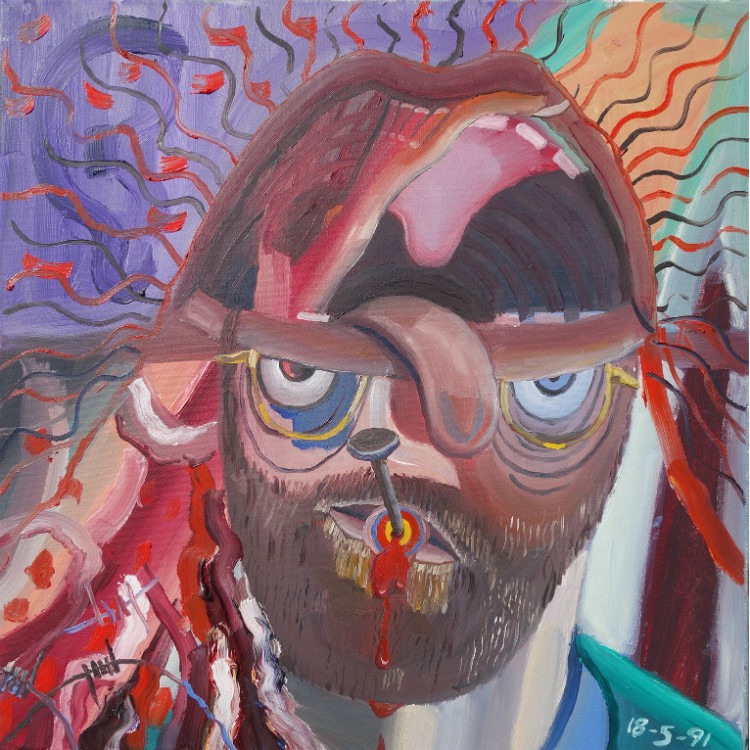
With reduced anti-depressants, Charnley experienced intense thought broadcasting. His brain appears as an enormous mouth, acting independently. “I feel I am always divided against myself by myself,” he wrote, capturing the essence of his internal struggle.
Portrait 10: May 23, 1991 – The Frustration
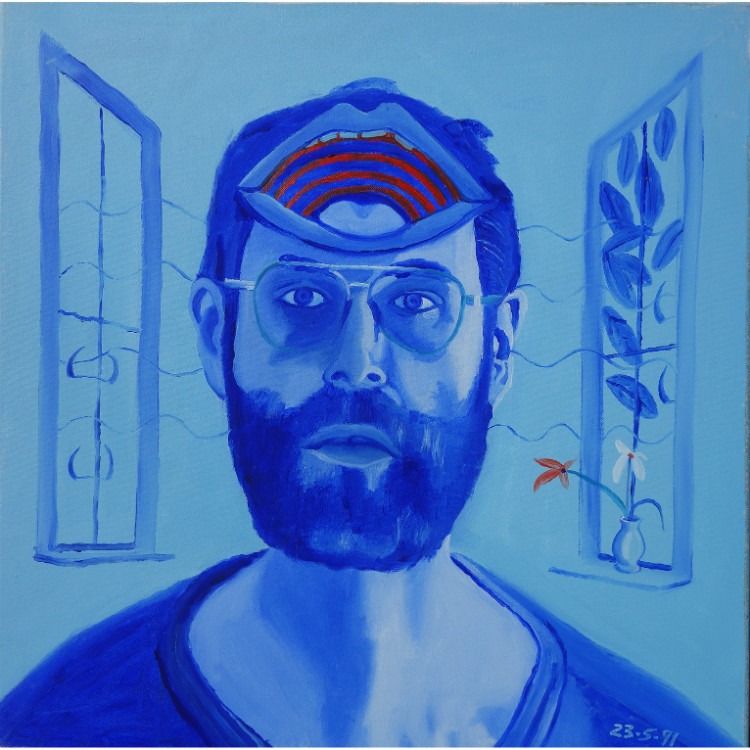
Expressing his frustration with others’ inability to understand his symbolic language, this portrait returns to the theme of thought broadcasting. Blue tones represent his depression, while wavy lines indicate the perceived ESP abilities of others.
Portrait 11: May 24, 1991 – The Broken Heart
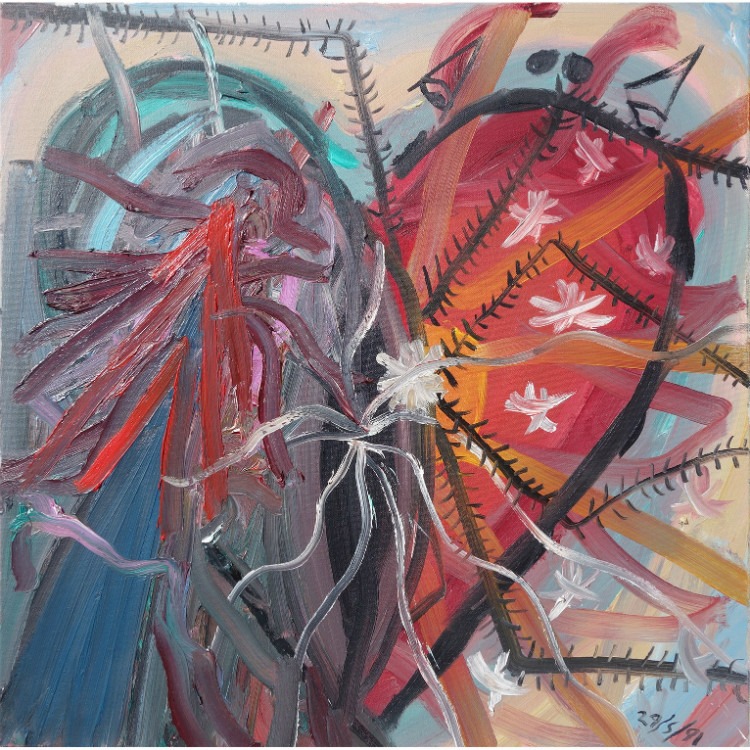
“Perhaps a broken heart is the cause of it all,” Charnley wrote. Spider legs represent his inhibitions, while the overall composition suggests his thoughts broadcasting outward against his will.
Portrait 12: June 8, 1991 – The Search for Truth

The spider legs return as a central motif, with Charnley finding comfort in the idea that their influence dissipates with distance from the core. Flaming darts represent ESP interventions at the moment of thought formation.
Portrait 13: June 13, 1991 – The Suicidal Thoughts

Incorporating Van Gogh’s crows from his final painting, this work expresses Charnley’s suicidal feelings. Empty eggs represent his mind stripped of secrets, while ESP horns appear as grinning mouths.
Portrait 14: June 19, 1991 – The Intrusion
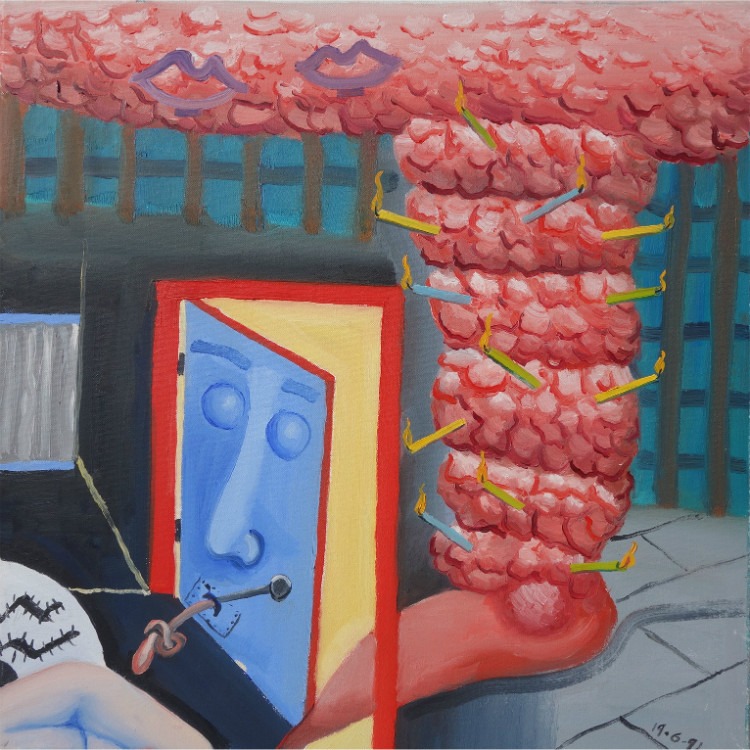
A simpler but no less powerful composition expressing the feeling of mental invasion – “like everybody has a foot in the door.”
Portrait 15: June 27, 1991 – The Crucifixion
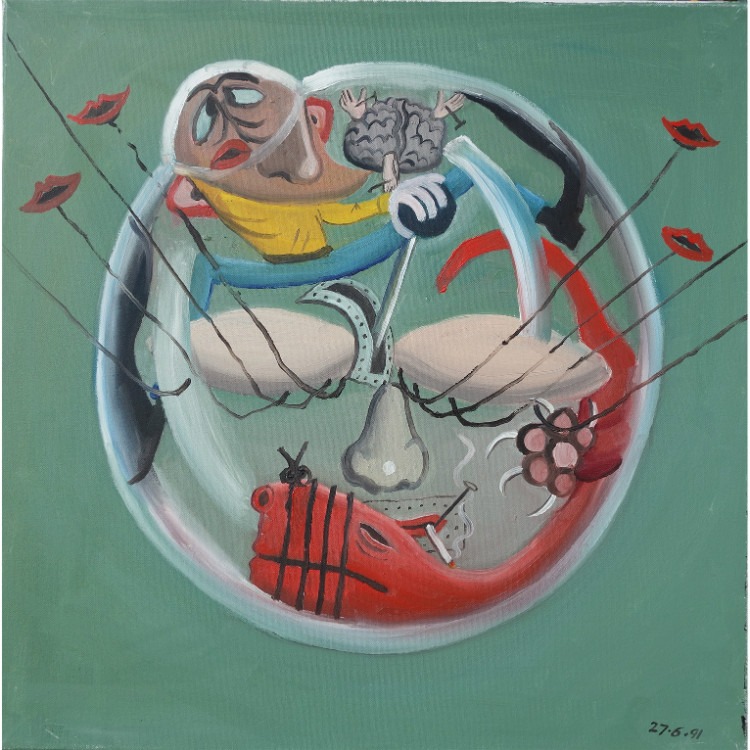
Perhaps the most complex portrait in the series, showing Charnley’s growing insight into his condition. He depicts himself as transparent, his brain “transfixed by nails as the Christ who could not move freely on the cross without severe pain.”
Portrait 16: July 12, 1991 – The Siege

Incorporating text from Bob Dylan’s “Series of Dreams” – “The cards are no good that I’m holding unless they are from another world” – this portrait reflects Charnley’s sense of otherworldly isolation.
Portrait 17: July 19, 1991 – The Final Anguish
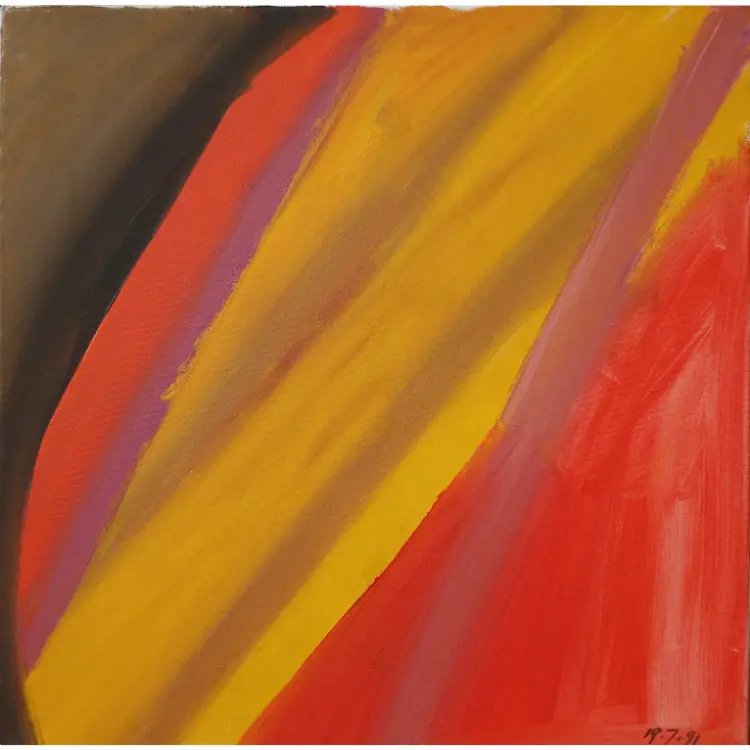
The final portrait in the Bryan Charnley Self Portrait Series contains no written commentary. Its intense yellow and red coloring speaks of acute mental anguish, created shortly before the schizophrenic artist’s death by suicide.
The Legacy of a Schizophrenic Artist
Bryan Charnley’s artwork does more than document his personal struggles—it serves as a bridge between those living with mental illness and those who seek to understand it. As a schizophrenic artist, Charnley broke new ground by addressing his condition with raw honesty and vulnerability.
The Bryan Charnley self portrait series remains a critical point of reference for both art enthusiasts and mental health advocates. It’s a reminder that creativity can be both a refuge and a weapon against the most challenging aspects of life.
Bryan Charnley Cause of Death: A Tragic End
On July 7, 1991, shortly after completing his self-portrait series, Bryan Charnley died by suicide. His death was a profound loss, cutting short a life filled with extraordinary artistic talent and profound emotional depth. The Bryan Charnley self portrait series, created in the final months of his life, stands as a haunting legacy—a visual and emotional autobiography that encapsulates his struggle and resilience.
His cause of death underscores the urgent need for compassion, understanding, and support for those grappling with mental illness. It also amplifies the significance of his work, reminding us of the thin line between brilliance and despair that many artists navigate.
Why Bryan Charnley’s Self Portrait Series Matters?
Art can humanize experiences that are often misunderstood or stigmatized, and the Bryan Charnley self portrait series does exactly that. It isn’t just a collection of paintings; it’s an unflinching exploration of what it means to live with schizophrenia.
For anyone interested in understanding the human side of mental illness, these self-portraits offer a rare and deeply personal perspective. As a schizophrenic artist self portrait collection, it challenges societal preconceptions and fosters empathy.
Final Thoughts
Bryan Charnley’s life and artwork are a testament to the resilience of the human spirit in the face of adversity. The Bryan Charnley self-portrait series is more than just art—it’s a cry for understanding, a chronicle of pain, and a celebration of creativity. Through his work, Charnley continues to inspire conversations about mental health and the transformative power of art.
The next time you look at one of his self-portraits, pause for a moment. You’re not just looking at a painting; you’re witnessing the soul of a schizophrenic artist self portrait, bravely laid bare for the world to see.